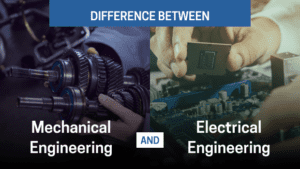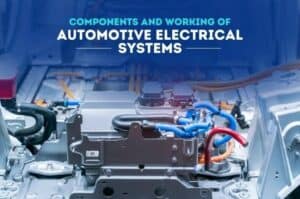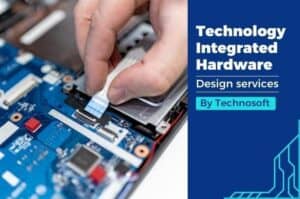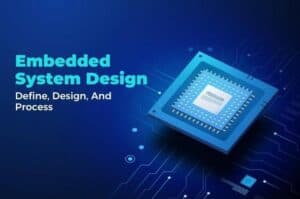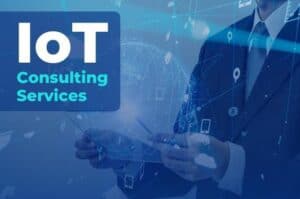IT-Enabled Services – Technosoft Engineering
Leave a CommentThe global industry of IT grew from $8.4 billion in 2021 to $9.4 billion in 2022, i.e., at a rate (CGAR) of 11.6%. This growth is proportional to the ITeS (Information Technology Enabled Services) sectors’ growth. IT-enabled services cover the entire gamut of operations that involve information technology for improving the efficiency of a company.
By optimizing and managing the entire process, or by enhancing customer acquisition through efficient delivery funneling, IT promotes the exponential growth of a business. Every solution in IT is an integration of several technologies that help streamline the process and deliver better ROI.

Technosoft Engineering is an ITeS service provider company that equips innovative solutions with modern methodologies to generate a structured process for a successful business. This blog shall cover technology-enabled services by Technosoft, the benefits, and threats of ITeS.
What are ITeS services?
ITeS stands for Information Technology Enabled Services. It is also known as remote services and web-enabled services. ITeS encompasses a wide array of techniques and procedures that leverage IT to expand and improve the efficiency of a company. Additionally, it includes customer relationship management solutions and an improved database outlook to create seamless processes.
IT-enabled services at Technosoft
- Design and development
This is the creation of apps for mobile devices including PDAs, EDAs, and mobile phones. These apps can be pre-installed on phones during manufacturing or supplied as web apps using server-side or client-side processing (e.g., JavaScript) to create an “application-like” experience in a web browser.
The Mobile back-end supports data routing, security, authentication, authorization, offline work, and service orchestration.
This is the creation of application software that runs in a web browser. The crux of designing a web application is developing user-friendly designs, responsive web pages, applications that are flexible with different web structures, and compelling functionality.
As this application runs in an open browser, it becomes important to integrate it with processes for authentication, authorization, asset handling, input, logging, and auditing to avoid security issues.
“Web design” refers to the front-end (client side) design of a website, including markup. In web development, web design overlaps web engineering. Web design involves numerous techniques and disciplines in website creation and maintenance. Web design includes web graphic design, UI design, authoring (including standard code and proprietary tools), UX design, and SEO.
- Custom engineering and software applications
These ITES services are tailored for specific organizations or users that are developed in iterative processes. It involves many departments like marketing, engineering, R&D, and general management. The custom solutions are used for content management, inventory management, customer management, HR management, etc.
- Data services
This includes services like technical publishing with proper conceptualization and management. The entire process involves the collection, analysis, write-up, and publishing of the data. The process of publication incorporates creation, acquisition, copy-editing, production, circulation, marketing, and distribution of the material across various channels.
- Catalog data management
To circulate the products digitally, catalog data management is essential. This involves centralizing technical and marketing information of all products in one place. It is nucleated in further stages that imply data extraction, capture, configuration, indexing, classification, and technical writing about every product.
- SEO and inbound marketing
- Search engine optimization (SEO)
This incorporates all the means of allowing the webpage to rank in SERPs. It involves detailed on-page and off-page activities like updating meta tags, uploading XML sitemap, URL restructuring, solving overall page health, bookmarking, classifieds submission, guest post submissions, outreach campaigning, and much more.
- Search engine marketing (SEM)
It is a valuable asset for any company to improvise digital visibility by setting up campaigns, setting accurate demographics, maximizing CTR, optimizing a landing page, analyzing each campaign, and optimizing performance.
- Social media optimization (SMO)
This involves handling all social media handles to optimize the implementation of marketing strategies. The minor segments incorporated into this are the implementation of analytics to target prospects, integration of CRM with lead generation campaigns, designing and engaging prospects with the designs, and much more.
- Email/Chat technical support
Emails have become primary standards for business communications and establishing CRM. Email support services include scalable non-voice contact center support services, automated email generation, economical, and non-invasive email services.
Benefits and Threats of ITeS
Benefits
- Flexibility: ITeS services offer complete flexibility and allow the company to change its structure and management at a reasonable cost. It focuses on core competencies and increases the speed of business.
- Scaling staff: IT-enabled services expand the reach to an additional workforce that grants unprecedented control over project management.
- Improved security: ITeS services come with additional security services like data monitoring, protection, and backup.
- Improved focus: These services avail experts on desks and allow staff to focus on dedicated tasks and prioritize goals.
Threats
- Security: Outsourcing an information system poses security threats from both the communication and privacy perspectives.
- Communication: Lapses in communication can be problematic and slow down the organizational process.
- Morale: Depending on the extent to which a corporation utilizes external resources, morale is a factor to consider. Despondent employees may work less or become dissatisfied with their surroundings, resulting in a decline in quality and, in some situations, turnover.
Nevertheless, threats can be mitigated by managing goals and outsourcing in a structured way.
Final Thoughts
IT-enabled services are looked up to increase the productivity and growth of a company. These are cumulative of all the services from addressing the target audience, analyzing the market, and 360-degree marketing solutions.
Technosoft Engineering is your one-stop ITeS service provider where you get top-to-bottom solutions that shall escalate your business. We try to supply leading industries with IT solutions of the highest quality. Due to the increasing complexity and importance of the IT industry, we have developed cutting-edge approaches to provide you with creative solutions.
If you are looking for technology enables services, connect with us and take your business to a next level.
Mechanical vs. Electrical Engineering
Leave a CommentEngineering is a dynamic field that offers impactful and lucrative opportunities along with the scope for advancements. This field requires a unique set of math, science, and computer skills. The term “engineering” refers to a wide range of specializations, including but not limited to computer, telecommunication, civil, mining, information technology, and so on, of which mechanical and electrical engineering are two subsets.
Mechanical and electrical engineering are the driving forces behind technological progress and change in the world of design. These disciplines work closely in building projects and hence, it becomes to establish a thin line between the both. Possessing an understanding of the difference between the two gives a better idea of projecting and executing a successful project plan.
Electrical Engineering – Power Generation
Electrical engineering focuses on the study, design, and implementation of devices and systems that make use of electrical current, electronic circuitry, and electromagnetism. It is nucleated into different fields like computer engineering, system, power, telecommunication, radio-frequency, signal processing, instrumentation, photovoltaic cells, optics engineering, etc.
- Power and energy
Engineers’ design here deals with the generation, transmission, and distribution of electricity and the design of connected devices. This involves working on the power grid and off-grid systems. The technological future in this sector is a real-time feedback loop controlled by satellites to prevent power surges and blackouts.
- Telecommunications
Engineers’ design here deals with the information transmission across a communication channel like cables, optical fibers, or free space. This involves modulation techniques like amplitude modulation and frequency modulation. Later, communication is established between transmitters and receivers, via a transceiver.
- Control engineering
This focuses on the modeling of dynamic systems and the design of controllers that will help systems to perform in the desired manner. Electrical products used in this case are electronic circuits, digital signal processors, microcontrollers, and programmable logic controllers. These intricate designs are used in automobiles, airlines, cruise control, industrial automation, robotics, etc.
- Electronics
Electronic engineering entails the design and testing of electronic circuits that utilize the properties of components such as resistors, capacitors, inductors, diodes, and transistors to achieve a specific function. Integrated circuits are the modern electrical components that allow a device to generate the expected output.
- Microelectronics and nanoelectronics
Microelectronics engineering designs and microfabricates small electronic circuit components for use in integrated circuits or as general electronic components. Nanoelectronics is the reduction of devices to nanometer dimensions. Both these involve the integration of chemistry and material science along with engineering postulates to redefine technology.
- Signal processing
It deals with the analysis and manipulation of signals. These signals can either be analog or digital, based on the information transferred. Signal Processing is the mathematical core of digital signal processing. It is rapidly expanding with new applications in every field of electrical engineering, such as communications, control, radar, audio engineering, biomedical engineering, etc., as analog systems are replaced with digital counterparts.
- Photonics and optics
Photonics and optics involve the production, transmission, amplification, modulation, detection, and examination of electromagnetic radiation. The application of optics involves the design of optical-electrical products, such as lenses, microscopes, telescopes, electro-optical sensors, etc., that utilize the properties of electromagnetic radiation.
Mechanical Engineering – Power Applications
Mechanical engineering is a discipline that combines engineering physics and math principles with material science to design, analyze, and manufacture mechanical systems. The core of this field is an understanding of mechanics, dynamics, thermodynamics, material science, structural analysis, and electricity.
It involves the use of tools like computer-aided design, computer-aided manufacturing, management and design of manufacturing plants, industrial equipment, aircraft, robotics, home automation, medical devices, transport systems, etc. It is nucleated into-
- Mechanics
It is the study of forces that act upon matter and is used to analyze and predict the acceleration and deformation of objects under forces. This involves subdisciplines of statics, dynamics, mechanics of materials, fluid mechanics, kinematics, and continuum mechanics.
- Mechatronics and robotics
Mechatronics combines mechanics and electronics. This interdisciplinary branch of mechanical, electrical, and software engineering integrates electrical and mechanical engineering to create hybrid automation systems. Electric motors, servo-mechanisms, and other electrical systems can automate machines with special software.
Robots are used in industrial automation processes to perform labor-intensive tasks like bomb disposal, space exploration, heavy-load transportation, etc.
- Structural analysis
It is a branch of mechanical engineering that deals with the performance of objects. This involves two modes- static failure and fatigue failure. Mechanical engineers design frequently use structural analysis after a failure has occurred or when designing to prevent failure.
- Thermodynamics and thermo-science
Thermodynamics is the study of energy and its transformation through a system. Engineering thermodynamics is concerned with changing energy, eg., in automobiles chemical energy is converted to heat energy. It is used in fields of heat transfer, thermofluids, and energy conservation.
Thermo-science on the other hand is used to design power plants, heating, ventilation, HVAC, heat exchangers, radiators, refrigeration, etc.
- Design and drafting
Mechanical engineers use drafting or technical drawing to design products and create instructions for manufacturing parts. They use computer-aided design (CAD) to create 3D designs. CAD-created three-dimensional models are also commonly used in finite element analysis (FEA) and computational fluid dynamics (CFD) (CFD).
Mechanical Engineering vs Electrical Engineering
- Electrical engineering is more concerned with electricity and power generation systems, whereas mechanical engineering is more concerned with machines and their efficiency.
- Electrical engineering is more abstract because it discusses invisible waves, whereas mechanical engineering is less abstract because students can see what they are studying.
- Mechanical engineering is an older branch of engineering than electrical engineering, which developed rapidly after the invention of electricity and Michael Faraday’s formulation of its laws.
- Electrical engineering is significantly more theoretical and mathematical than mechanical engineering.
Final Thoughts
Engineering is all about making current processes work better and integrating them with modern technology. Mechanical and electrical engineering helps in creating solutions and boosting performance-oriented businesses. The thin line between both disciplines is visible, but their integration is important to bring an idea to reality.
Technosoft Engineering provides mechanical and electrical engineering solutions to bring your ideas to reality. With a cross-functional approach, we aim to merge ideas with ultra-modern technology and use the same to solve a problem statement. Our services are, but are not confined to home automation, medical devices, plant automation, automobile, smart packaging, embedded systems, etc.
Get in touch with us today and bring in ultra-modern solutions in the real world.
About Automotive Electrical Systems & Automotive Electrical Engineering
Leave a CommentThe automotive electrical systems and automotive electrical engineering industry have hyped the popularity of electric and hybrid vehicles. The advancements in vehicular technology with safety features, infotainment, body electronics, and powertrain have flooded the sector with increased demand. With respect to the same demand, the expected market size of automotive electronics is valued at $8.12 billion by 2028, with a CAGR of 7.48% every year.
From classic electronics to passive safety features, automotive electrical Engineering comprises it all. All these features draw their power from a battery. It is a loop where the current flows from the positive terminal of the battery to generate an output like the lighting of gauges and flows back to the negative terminal.
Thus, to get a basic understanding, this article will briefly explain how Automotive Electrical Engineering and automotive electrical systems work.
What is an automotive electrical system & automotive electrical engineering?
The automotive electrical systems & automotive electrical engineering include engine management, ignition, radio, telematics, car puters, infotainment systems, and many more. This system primarily generates, stores, and supplies electricity to vehicle systems. It also controls vehicle electrics like electrical gauges, digital gadgets, power windows, central locking mechanisms, etc.
Components of an automotive electrical system
- Magneto
Also known as ignition magneto, is a magneto (electrical generator that uses permanent magnets to produce alternating current) that provides current for the ignition system for a spark-ignition engine, like, a petrol engine. It consists of 3 components-
- Permanent magnets
- Coil
- Cranking mechanism
This converts mechanical energy into electrical energy. With a constant magnetic field strength, it generates a steady output regardless of load variations.
- Generator/Dynamo
It supplies the electrical energy for charging the battery that gets the drive from the engine through the fan belt. The generator converts mechanical energy into electrical energy, i.e., direct current (DC). This is because the electric components need DC to function, which they can directly consume. It consists of 3 components-
- Frame
- Armature
- Field coils
A Dynamo takes the help of a commutator and uses rotating coils and a magnetic field to convert mechanical rotation into an electrical supply. They are placed on the tires of electric cars to produce energy and to maintain the efficiency of the car even when the accelerator is not pressed.
- Alternator
Also known as AC generator. It is an inevitable part of a vehicle’s charging system. The alternator provides the electrical power that charges the battery, however, the current produced is alternating current (AC). Because vehicles use a 12-volt DC electrical system, this alternating current (AC) power is quickly converted to direct current (DC).
It consists of 4 components-
- Frame or housing
- Rotor with electromagnets
- Stator
- Slip rings and bushes
Its efficiency is not limited to fan cooling loss, bearing loss, iron loss, copper loss, and the voltage drop in the diode bridges, but also extends when combined with permanent magnets.
- Cut-out relay
Also known as a circuit breaker, regulates and cuts the current output going to the battery. When the engine is running at low speeds, the generator output is frequently lower than the 12-volt battery output voltage. As a result, it is insufficient for charging the battery.
Because the battery voltage is greater than the generator output, in this case, the battery begins to drain into the generator. A voltage regulator/Cut-Out is used to prevent the battery from draining. It is responsible for connecting and disconnecting the generator from the battery.
The DC generator is connected to a battery through a cut-out relay and an ammeter. It also maintains the voltage between 13.5 and 14.5 volts to protect other electric parts in the vehicle.
- Battery
The battery stores electrical energy in DC form for future use. The positive terminal is directly connected to the engine starter motor. It aids in starting the engine by cranking the starter. The alternator immediately charges the battery while the engine is running. When the engine is turned off, the battery can power the electrical components.
Working principle of an automotive electrical system
- The Automotive electrical systems in a vehicle are designed with switches or relay systems and are connected to the battery.
- When the engine starts, the electrical motor receives power from the battery.
- Via the combustion process, the engine keeps running and the alternator keeps charging the battery.
- When the engine slows down, the cut-off cuts the power between the battery and the generator.
- The alternate output voltage is maintained above the battery voltage to prevent it from draining and ensure smooth operation.
Summing Up
automotive electrical engineering work on the simple principle of electromagnetic induction. They are responsible for advanced automotive features like ABS, ASR, PA, airbags, emergency brakes, driver assistance, navigation systems, and passenger comfort systems. This requires the immense assistance of tools, both hardware and software.
Technosoft is an automotive electrical engineering services provider company. We offer an extensive portfolio of product solutions, including
- Designing and developing individual electrical components
- Chassis Electronics and Power Distribution
- 2D and 3D Wiring Harness Routing
- Wiring Harness Design
- Climate Control and Body Electronics
- Electrical Components Selection
- Electrical & Electronics Schematic System Design
- Manufacturing Process Setup
- Value Analysis/Value Engineering
We try to merge the latest technology and serve advanced products to our clients!
Electronic Hardware Design
Leave a CommentThe product development process & Electronic hardware design is the integration of two individual processes-
- Embedded hardware development
- Software development
The Hardware Design Services shape the physical connection between users and technology. The hardware designs draw upon industrial design, interaction design, and electrical engineering. Its interface elements include touchscreens, buttons, knobs, sliders, switches, etc., and acquire high-end technology for seamless functioning.
Thus, to make the design and development of real and touchable products attainable, Technosoft engineering is here to design a cohesive vision alongside businesses that are more deeply embedded with technology at every product development stage. Our hardware design services are maturing day by day as our aim is to automate products and connect them to the internet.
This article is a brief about our hardware design services.
Hardware Design Services By Technosoft
In the last decade, global trends have evolved in the area of human-machine-communication interfaces, and so have our Hardware Design Services. For modernized humanistic tools like aircraft, home automation, etc., the certainty that the embedded software runs through the body is essential. Whether it be a computer design or modern homes, the basic hardware components like IC wired logic gates, analog and hybrid devices, and other digital components remain constant.
To dig deeper, here are our four Hardware Design Services that provide an edge to the product.
- System Architecture Design
Hardware architecture is the identification of a system’s physical components and their interrelationships. This stage of product development allows hardware designers to understand how components fit into the system and what software can be integrated to provide full functionality.
The need for hardware architecture design and optimization is that, if you enter a detailed design with architecture flaws, you may not be able to recover. Thus, a planning flow modulated by Technosoft is-
- Designing functional block diagram
- Plotting blocks with a partial BOM (Bill Of Materials) as a placeholder
- Assigning the functional blocks to PCBs
- Analyzing PCBs’ routability
- Optimizing functional blocks by moving them and establishing signal integrity
- Re-checking that the boards meet parametric and product requirements
As product complexity rise and error limits shrink, hardware architecture design becomes a competitive requirement.
- Verification and Validation
These are essential stages as they define what outcome you expect and its validation. Verification determines whether you are building the right product (does the device meet end users’ needs), and validation determines whether you are building the product right (does the device output matches its inputs).
Stages of Verification and Validation:
| Design Verification | Design Validation |
|---|---|
| Designing output as expected | Examining whether the design meets end users’ needs |
| Testing systems, subsystems, and units | Testing the system |
| Processed during development | Performed after development |
| Testing individual modules or completed systems at every stage and under any conditions | Testing modules under user conditions |
| Inspecting, analyzing, and testing modules | Testing of products under real-use conditions |
| Preparing reports on tests and traceability. | Preparing reports with test results, traceability, and regulatory view conditions. |
As the development stages proceed, it becomes important to ensure that the product being developed meets the needs.
- Custom PCB and Mechanical Design
A PCB is a plate made of dielectric material with electrical circuits formed on its surface and volume. It is the heart of all electronic devices, and their designs can be customized based on the client’s requirements. Our modulated PCB design service delivery steps are noted below.
- Placing the components on the indicated area in technical specification
- Preparation of PCB layout 3D model
- Coordinating the placement of the components with the client on the 3D model
- Carrying out traces between elements
- Modeling the design and complying with signal integrity, power requirements, electromagnetic compatibility, and temperature distribution.
- Preparing final PCB 3D model
- Preparing a list of components for procurement
- Preparation of Gerber files for production of PCB
Besides this, our mechanical design services include-
- Technical task analysis
- Sketching initial design and 3D modeling
- Prototyping and testing
- Preparation of technical documentation
- Production of the final product
This line of execution makes it easy to build any product like engines, generators, smart housing, elevators, or even air conditioning.
- Prototype Design
The purpose of prototyping in hardware design is to answer questions from technical specifications to understand the clientele. Our prototyping support revolves around 3 stages-
- Ideation: This involves research and conceptualization
- Prototyping: This involves two segments
- Alpha prototyping: Ths involves examining the core functionality, look, and feel of the proposed device in a controlled environment to demonstrate the actual functioning of the device.
- Beta prototyping: This involves functional testing and determines how well the device functions relative to consumer expectations.
- Productization: This involves bringing a product to actual reality by answering all questions and iterations.
Prototyping is a multidisciplinary journey that involves answering questions after research and executing functionalities as required.
Conclusion
The hardware design services by Technosoft are the sum of all the aspects of product development, i.e., from research to production. Our services are not confined to hardware systems but extend to embedded software services and connectivity solutions. This enables us to produce a feature-rich product in-house. With our innovative practices and methods for hardware design, we have served our clients in industries like consumer products, surveillance, automation, and IoT with top-notch hardware design solutions.
We have and will always deliver customized technology-rich products each time!
Embedded Electronics & System Design – Define, Design, And Process
Leave a CommentAn Embedded Electronics Design is part of a device that uses electronic hardware and mechanical parts. These systems control the physical operations of the machine. Earlier, embedded systems development was based on microprocessors, and now they are based on microcontrollers (i.e., microprocessors with integrated memory and peripheral interfaces).
Embedded systems range from low complexity with a single microcontroller chip to high complexity with multiple chips. The systems are dedicated to specific tasks, and thus, they require proper optimization and an increase in reliability and performance. Specifically speaking about embedded system design, the complexities are not confined to chips, but also extend to the design of hardware and software components.
In this article, we shall walk through the basics of embedded system design and also its applications.
Embedded systems
An embedded system is a computer system that consists of a combination of a processor, memory, and input/output peripherals. The total system generates the desired output in a mechanical or electronic system. There are billions of embedded systems devices like automobiles, digital devices, electronic appliances like washing machines, microwaves, and other devices like telephones, etc.
All these devices have memory, a processor, peripherals, sensors, imaging systems, etc. Thus, the embedded system design is much more sophisticated and designed for specific use. Here, the input and output are specific. In some systems, where the real-time desired output is to be generated, real-time embedded systems are curated, which are intricate.
Embedded system design
As discussed, an embedded system = hardware + software.
Hardware → to perform the task
Software → to process the task
Both hardware and software are interlinked to generate the desired output. The processor is the core part of the entire system. Depending on the needs, several interfaces and peripherals are interconnected to the system.
The systematic architecture of an embedded system can be depicted below.
- Processor
It is the heart of an embedded system that takes an input and produces an output after processing data. It consists of two units:
- Control Unit (CU) – It fetches instructions from the memory.
- Execution Unit (EU) – It has circuits that implement instructions for data transfer and conversion instructions.
A processor runs these units over and over as the instructions are fetched from memory.
There are different types of processors-
- General Purpose Processors (GPP) like Microprocessors, Microcontrollers, Embedded Processors, Digital Signal Processors, and Media Processors
- Application Specific System Processors (ASSP)
- Application Specific Instruction Processors (ASIPs)
- GPP core(s) or ASIP core(s) on either an Application Specific Integrated Circuit (ASIC) or a Very Large Scale Integration (VLSI) circuit.
The choice of a process depends on the desired output and the complexity of the application.
- Interfaces
Every physical device uses an interface to connect with the outside world. It selects two important boundaries:
- Between CPU software and digital interface logic.
- Between digital and analog sides of the interface.
This communication is established with peripherals and other microcontrollers as a part of the whole embedded world.
There are many interfaces like-
- Serial communication interfaces
- Synchronous serial communication interface
- USB
- Networks like WiFi
- Debugging like JTAG
- Field buses like CAN
The choice of interfaces differ based on the desired output.
- Peripherals
The different peripheral devices establish communication between the embedded system and the outside environment in combination with the microcontroller. The choice of peripherals depends on:
- Operational speed of the microcontroller
- Space and prototyping of end-product
- Memory storage for data and programs
- A number of input and output devices connected
- Power consumption for maintaining the efficiency of the embedded system
There are various interfaces like-
- Displays, e.g: Graphic LCD
- Multimedia cards, e.g: SD Cards
- Timers, Counters
- Analog to Digital Converters
- Input devices, e.g: keypad
- Output devices, e.g: LED
- Serial Communication Interface
- Firmware
The flash memory chip in an embedded device is where the special software that controls the device’s functions is stored. It acts as a-
- Bridge between hardware and software applications.
- Channel of communication between human and machine
The services associated with firmware are-
- System Architecture
- Design and Development
- RTOS/ OS/ Bare Metal Applications
- Porting & Optimization
- System Integration & Security
It enables direct control of circuits and hardware components that include the above services to make execution seamless.
- Embedded Software
This software is embedded inside the system that runs on top of firmware to provide unique features. They control different parts of the mechanical system. Embedded software is-
- Easy to configure and updatable.
- Are customizable and functionalities can be increased.
There are different types of embedded software like-
- Embedded bare-metal software
- Embedded Linux software
- Embedded RTOS software
- Embedded networking software
Some applications do need real-time data processing, which gives rise to real-time embedded systems, which are prominently used in today’s systems.
Designing Embedded Systems
All the parts mentioned above are integrated together in the following steps.
- Defining system specifications
- Defining system hardware and software requirements
- Selecting mainframe and associated technologies
- Defining the resources required and analyzing the budget
- Selecting hardware and software components
- Designing hardware, i.e., schematics, layout, PCB, and board
- Developing firmware and testing
- Entire system integration and testing
Summing Up
Embedded system design is an interesting field that integrates various skills and tasks. The advanced embedded system serves its applications in medical and industrial equipment, transportation systems, military equipment, consumer devices, and much more.
Technosoft Engineering helps companies make smart and connected products by working with them on advanced embedded systems, embedded solutions, home automation, metering, sensor technology, home appliances, and medical devices. From consultation to designing custom PCB and embedded systems, the services cover 360-degrees embedded, connectivity, applications, mobility, and cloud solutions.
If you too want to develop an outstanding technology with greater applicability in any field, you can connect with us!
IoT Consulting Services – Technosoft Engineering
Leave a CommentThe Internet of things (IoT) is a physical object that connects and allows the exchange of data. The exchange of data among devices is done with objects having sensors, processing ability, software, and other technologies. These devices are connected over the internet or other communication networks to establish data transfer.
IoT converges multiple technologies like ubiquitous computing, embedded systems, commodity sensors, and machine learning. Its rapid evolution has led to estimates that it could have an economic impact of up to $12.6 trillion by 2025. This opens the doors for IoT consulting companies that can grow enormously.
Technosoft is an engineering solutions provider company. We work with customer electronics, home automation, sensor technology, and many more to create smart and connected devices. IoT technology integrates ambient intelligence and autonomous control that supports more than one common ecosystem and controls devices. And at Technosoft, we take the same technology to the next level and provide a dynamic and interactive environment.
IoT Solutions and Services By Technosoft
Our approach to development is direct integration of the physical world into computer-based systems, which results in economic benefits, reduced human exertion, and enhanced efficiency. Cutting intelligence is offered on three levels-
- IoT devices – Consists of networked things like sensors, actuators, etc., that connect with edge nodes/gateways.
- Edge nodes – Consists of data collection systems that provide pre-processing of data, secure connectivity to the cloud, edge analytics, etc.
- Cloud computing – Consists of database systems that store sensor data and handle communication that transpires in IoT devices and edge notes.
We bring smart objects closer to reality by analyzing IoT data, extracting hidden information, and predicting control decisions.
To meet the requirements of this intricate architecture, our IoT consulting services are divided into four stages.
- Embedded Systems Development
“Change is the only constant.” With the integration of IoT, embedded systems are in a rapid rush to change their hardware, firmware, and electronics. This enhances the response or expected output. In this stage, we lay out a system architecture design. It involves the mapping of-
- Hardware and software components
- Embedded systems and IoT
- Planning of software for IoT embedded systems
- Interaction of humans and desired output
Embedded systems transfer real-time data over the internet for extended applications like monitoring, tracking, analysis, etc.
- Connectivity Solutions
It represents communications, transmission, and receiving data for a device to function properly. It involves methods including applications, sensors, trackers, gateways, and network routers. Our IoT connectivity services include-
- Network enablement and stack integration
- Stack development and porting
- Gateway implementation and integration
- Compliance with standard bodies
The latest cellular 5G networks may actually become a universal solution for IoT connectivity, and we will try to integrate the same into our technologies. Furthermore, the requirements of satellite, extraterrestrial, cellular, and LPWA are served specifically.
- Applications and Mobility Solutions
These are the actual connected digital gadgets. We build feature-rich connected applications from scratch or transfer and update existing legacy systems. We also look into UI/UX and follow design standards, workflows, and guidelines to ensure a seamless experience for web and mobile applications. Our services include-
- Mobile – Android | iOS -Objective C & Swift | Cordova React Native | ionic | Mobile Angular UI
- Web – HTML/CSS/PHP/Java/Python | Angular JS, React JS, Node JS | MySQL, PostgreSQL, MS SQL, MongoDB
- Custom engineering – ASP.net, VB, VB.NET, Java, J2EE, PHP Microsoft.NET, C++, and C
The main focus is a major shift to unlock backend values and express client-driven information in content that converts a system of record into a system of commitment.
- Analytics and Cloud
We provide a centralized system that helps deliver and transport data across the Internet to data centers. The files and data can be accessed, stored, and used across different geographies. It also offers management and analysis of big data across multiple platforms and systems. Our services for analytics include-
- Data Extraction, Transformation, and Loading (ETL)
- Report Generation
- Dash Boarding and Visualization
- Real-time and Predictive Analytics
Our services for Cloud include-
- AWS & Microsoft Azure Based
- Device to Cloud Connectivity
- Cloud Applications
- Cloud Analytics
When every service is integrated together, IoT proves its potential in delivering values, enabling disruptive business models, seamless customer experience, resilient value chains, and productive resources.
Technosoft – Finest IoT Consulting Firm
The elaborated services offered by us are applicable to the industries of home automation, customer electronics, smart metering, smart lighting, and medical devices. Our idea is to enable IoT for communication between devices to fulfill addressability, standards, ease of data storage, security, and safety, by designing for anarchic scalability and revealing the entire potential of IoT.
If you are convinced that we can cater to your needs, get in touch with us today!


